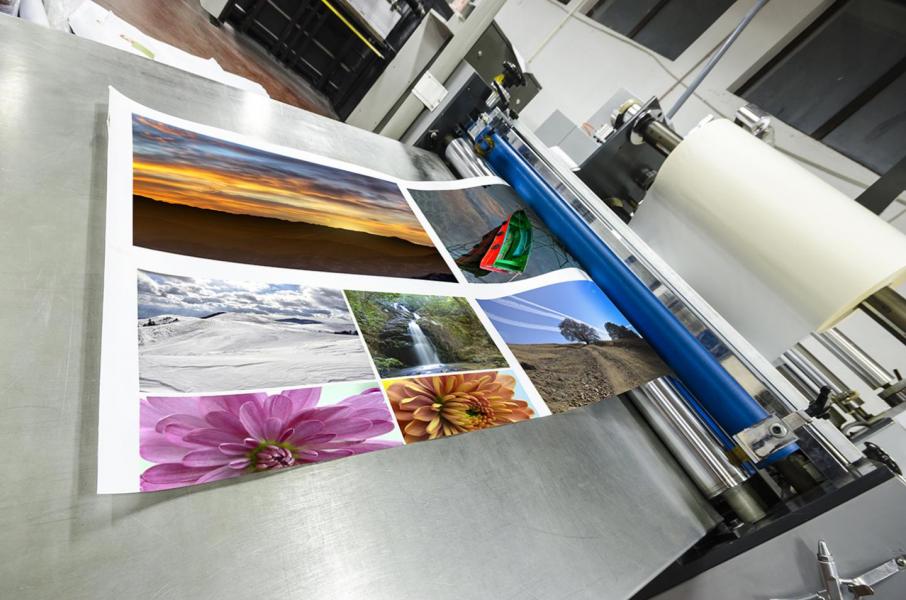

Ruth Cohen spoke to Gary Wilson, one of Expense Reduction Analyst’s print specialists about hot topics in the print industry.
Gary says of his passion for print – “aside from the fact that I have lived and breathed print for over 20 years, which has taught me a few things, I have ink in my blood. Not physical ink but what print is all about – Communication!
"My love of print and my early experience motivated me to learn more about the industry and how it could benefit ERA's clients when I first joined in 1997. Over these past years, this has involved working with hundreds of clients and printers. Visiting printers and mail houses across Australia to assess, on-site, their manufacturing capability and quality systems have been an essential part of my print journey.
One of my strong beliefs is that to truly match a client's needs to the best printer you must personally know them and have physically seen their operations. I attended Print Industry seminars, briefings, subscribe to print industry publications and continually interact with printers in order to stay up to date with the most recent technology and trends in the print industry."
Why do you think Print is a Hot Topic right now?
Many companies are recognising that print is still a highly effective communication channel. Companies such as Google, LinkedIn, Amazon and Apple are all using print as part of their marketing strategies.
It is even being said that print is having a renaissance. It is certainly true that a large number of companies are switching some of their marketing budgets from digital to print. Each day 20 million Australians receive printed direct mail marketing material in their letterbox.
Direct mail is also seeing a resurgence, with companies focusing on smaller runs with more personalisation. Driving this trend is an opening rate of 92% and a customer preference of 73% for direct mail marketing.
Direct mail’s performance has proven to be enhanced when it is part of an integrated multi-channel programme. Printers continue to take advantage of changes in technology to drive their businesses in order to provide quality products at cost-effective prices.
What do you think the most important issues are facing print buyers?
The two hottest things are technological change and consolidation, and to keep up with who can do what best.
Technological Change
A game changer is well on the way for the industry. New age inkjet machines have begun to arrive in Australia. They will create a new production and cost platform that marketers will be attracted to. This is not the inkjet printer that we remember from the past which was low cost and low quality.
Operating at half the cost for web press work such as books, direct mail and transactional documents, the potential is there for this new technology to also meet the demand for medium length high-quality print.
As their speeds increase, the potential is also there for inkjet machines to replace offset, the ‘holy grail’ of the longstanding highest print quality. Regarding the latter, web offset now only has 2 print companies who do that in Australia, compared to 2016 when there were 5.
The other thing is for print buyers to know who is who in the zoo and what market rates exist.
Print company acquisitions and mergers will continue resulting in fewer, but larger printers. The goal is to gain greater efficiencies and higher technical resources. For print buyers, there will be a wider range of options, increased personalisation, a broader range of high-quality options and strong market pressure to provide highly competitive pricing.
The pressure to respond to rapidly changing communication trends requires significant innovation, flexibility, highly skilled staff, latest technology and money. Many small to medium-sized printers find meeting these challenges a ‘bridge too far’.
Where should print buyers be focussed when trying to reduce costs?
Focus on their organisation’s total print needs. Too often the focus is gaining the ‘best price’ for individual jobs and not on the best outcome for all jobs. The print is not a commodity, it is not mass manufactured, and the quality can vary widely, depending on each printer’s capability.
If you have significant annual print spends, which could include large, time-sensitive quantities of specific types of quality printed products, a two-pronged attack is best. Find printers who specialise in the large ticket, or volume items, as well as those who can provide all of the items ‘under the one roof’.
Go to market with a small, but the highly researched number of printers that can meet your total needs. Keep in mind that the more printers you work with come at a higher internal cost, with staff spending more time on getting quotes, choosing printers and processing more invoices.
Ensure that the printers you choose can consistently deliver the quality you require; that you are confident that you could work comfortably with them; that they are able to deliver on time; and that they can accommodate urgent work.
Each printer should also be brave enough to ‘challenge’ you and introduce new ideas, backing that up with ongoing investment in new technology. Lastly, they must be able to offer competitive market rates.
About Expense Reduction Analysts (ERA)
We help clients to support the health and growth of their business, whatever its nature, focusing on proactive expense and supplier management. As an Australian and global company, Expense Reduction Analysts can benchmark costs and spending, follow the latest supplier innovations, and have real-time data on changes and advancements. This strength gives Expense Reduction Analysts the recognition and power needed on supplier markets to best serve your interests.
For more information please contact Ruth Cohen at rcohen@expensereduction.com






